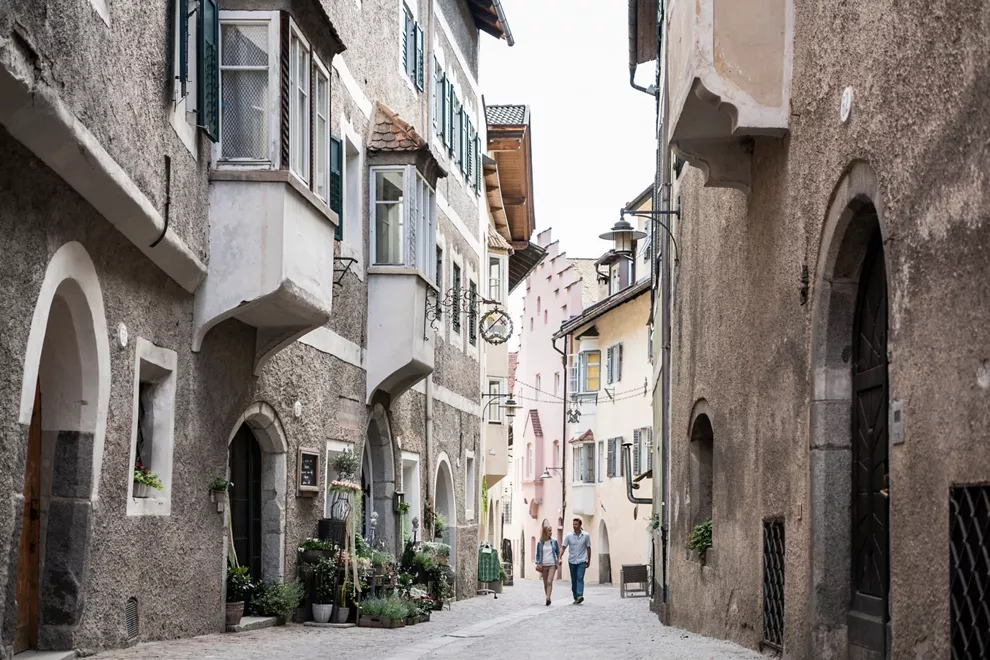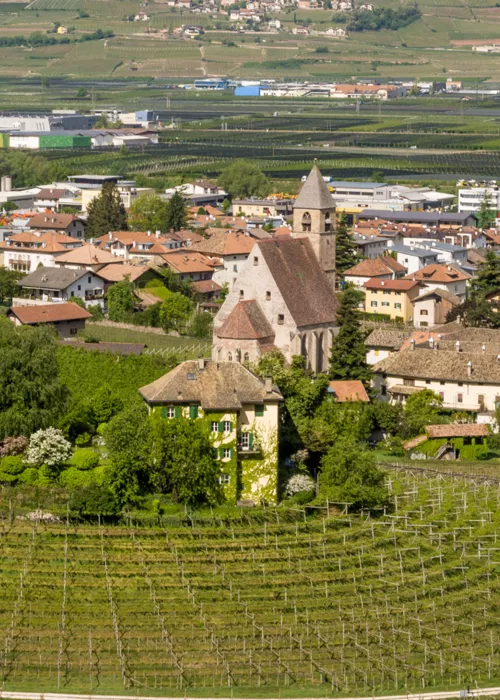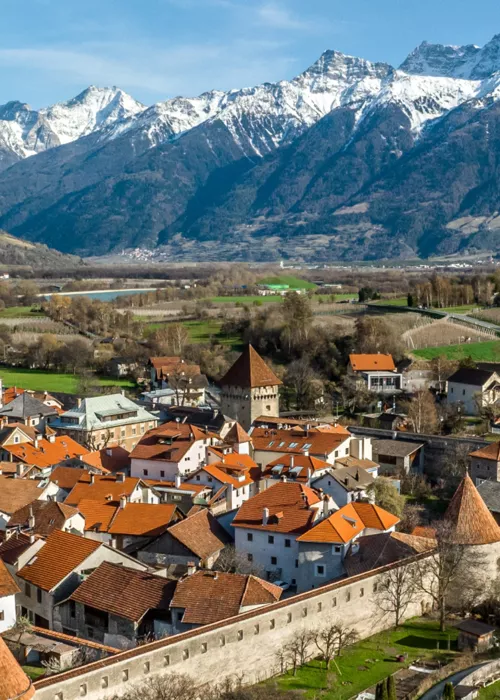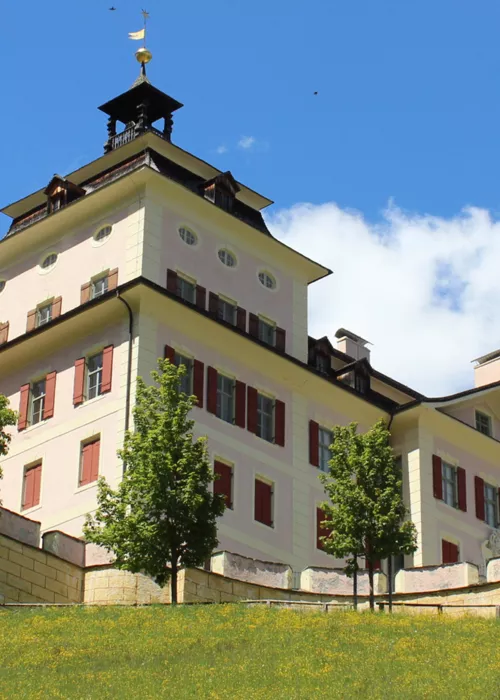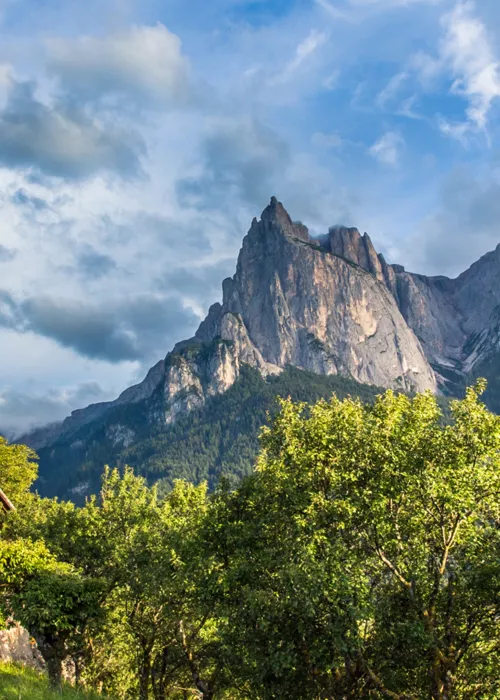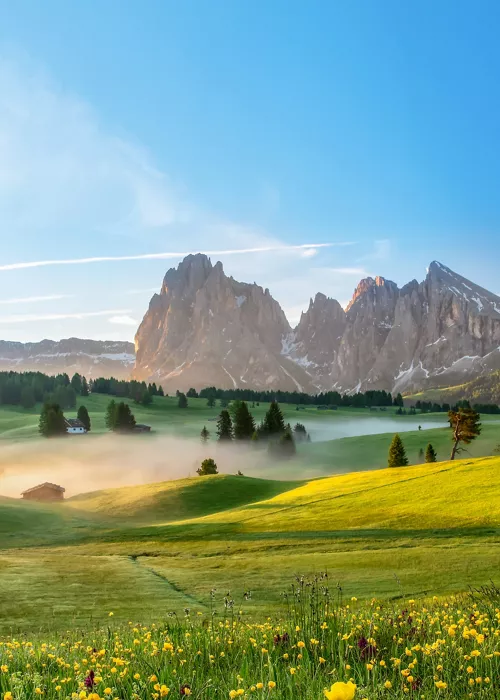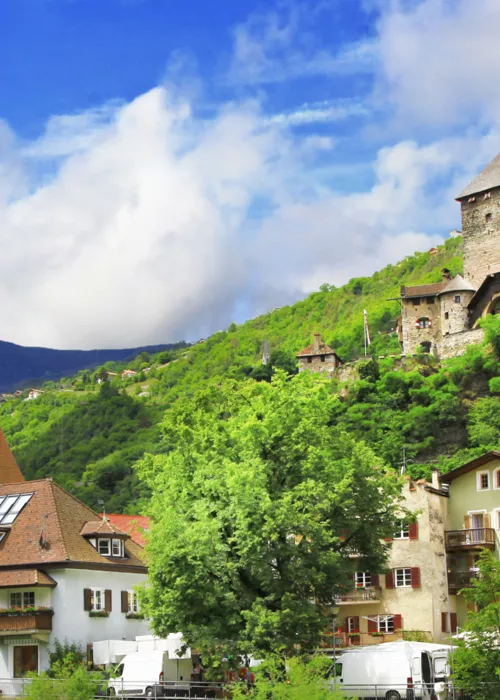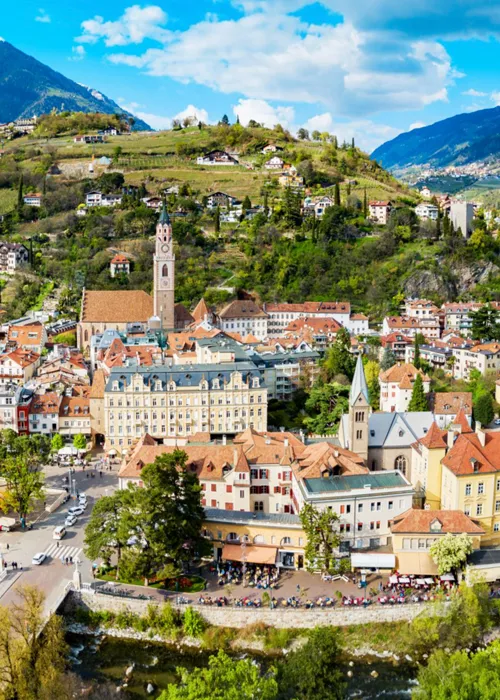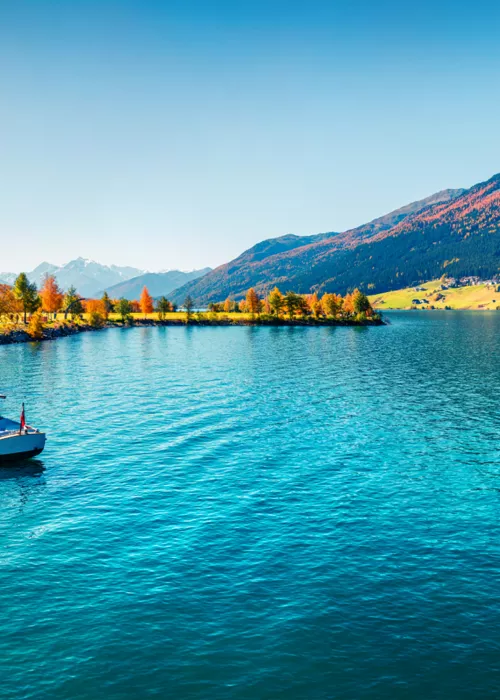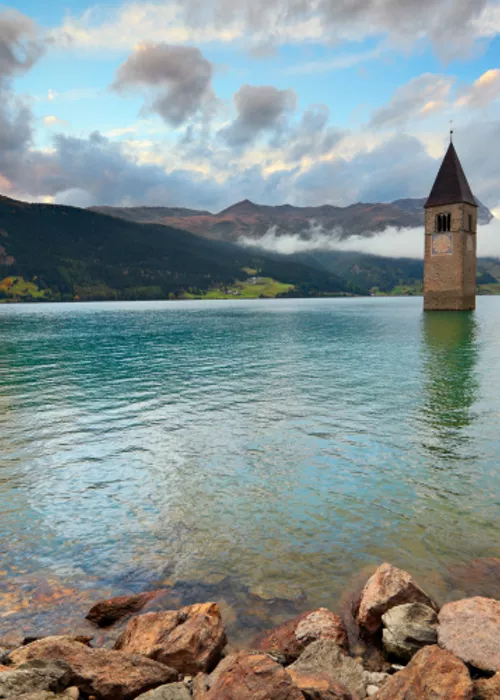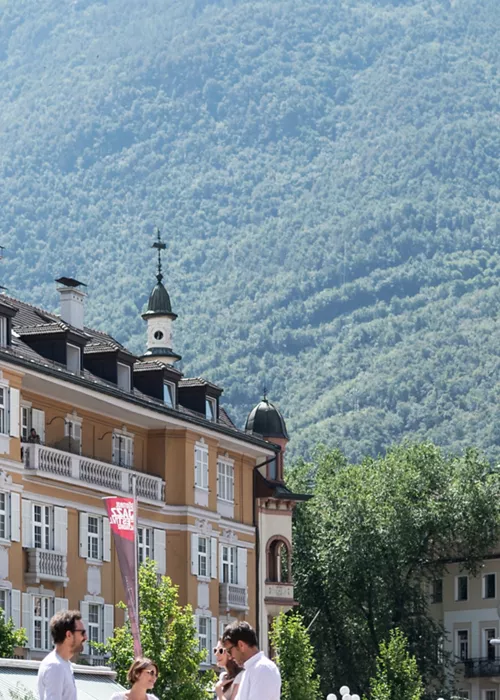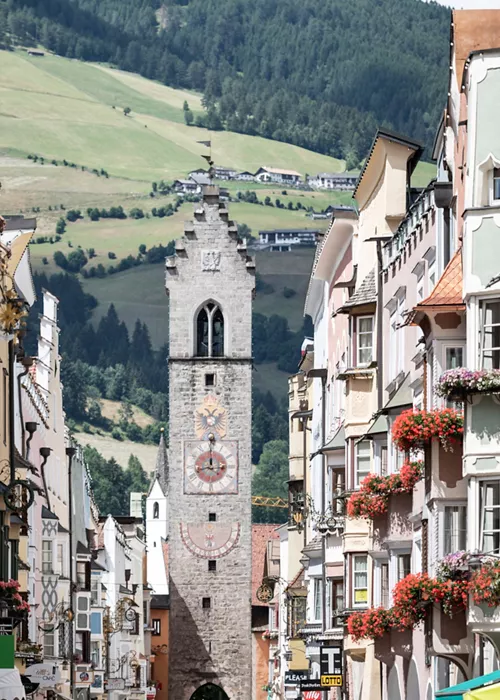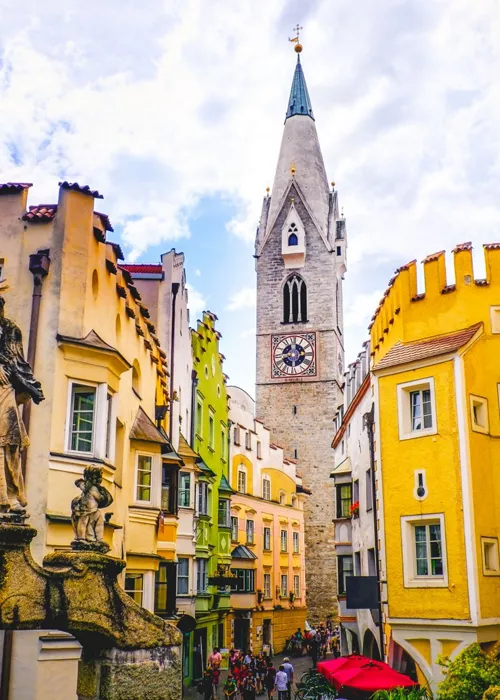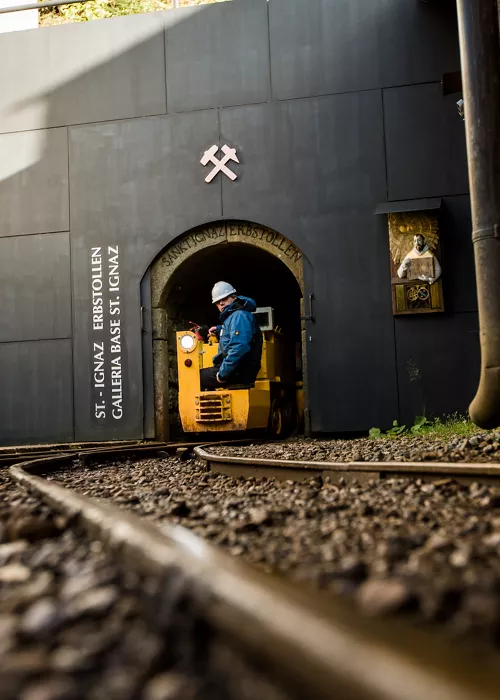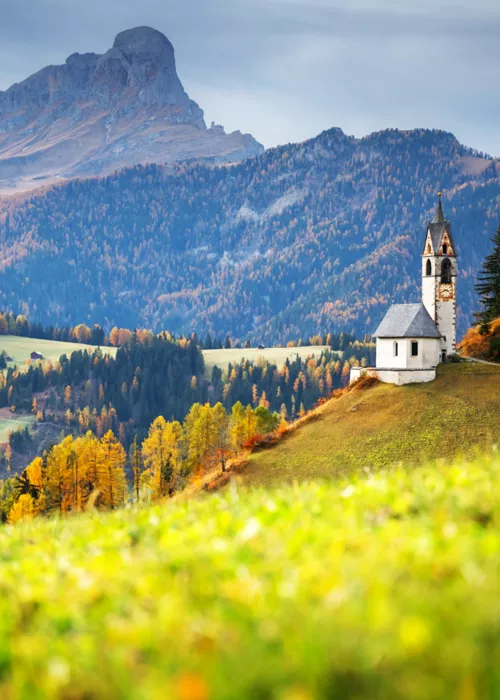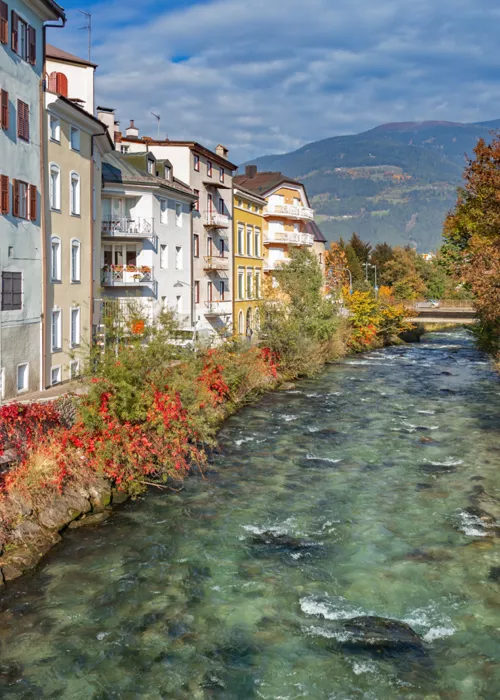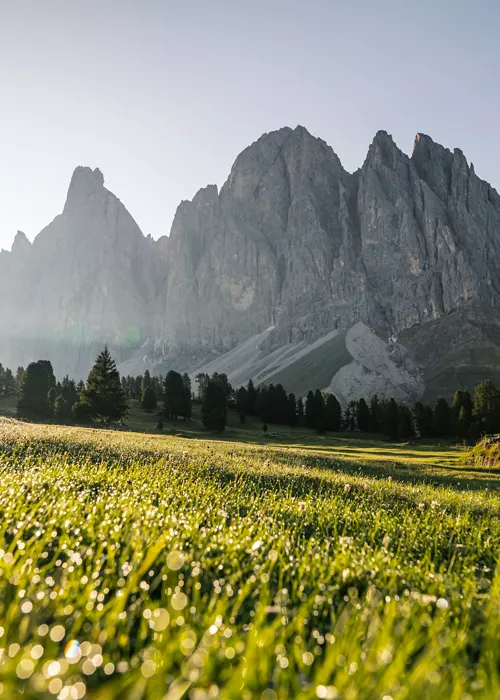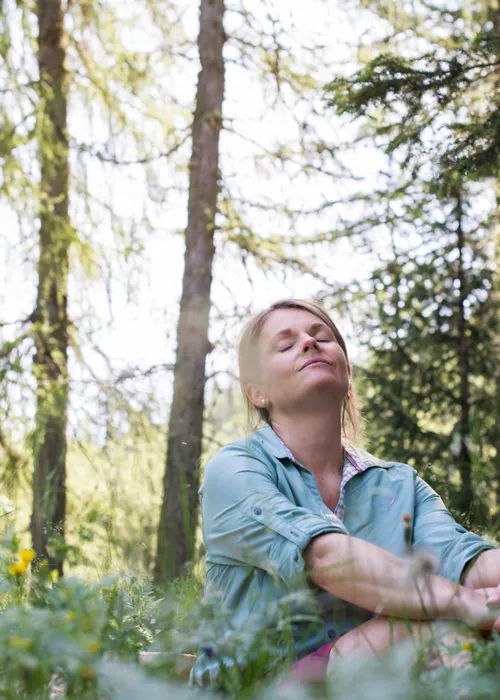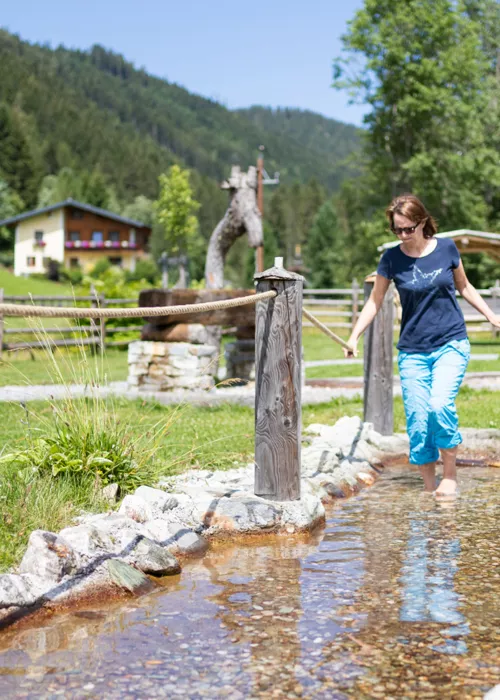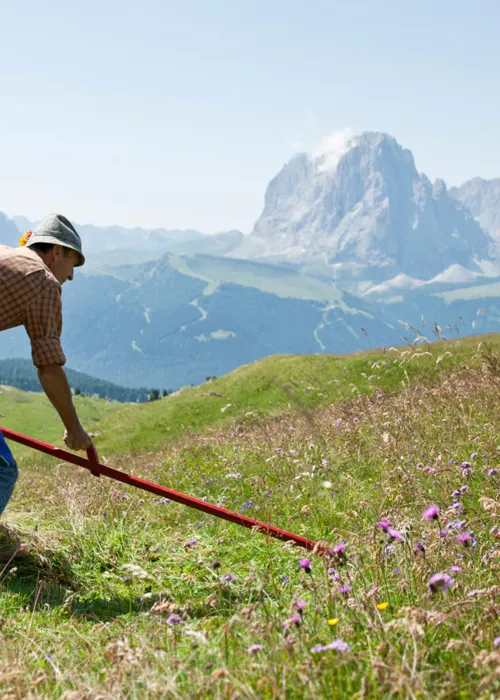In South Tyrol, discovering Italy's most beautiful villages
4 minutes
Specifically, there are five municipalities that have deserved this recognition for the magnificence of their landscape as well as their artistic, cultural and architectural heritage: Egna, Glorenza, Vipiteno, Castelrotto and Chiusa.
These small towns, which will captivate you more than any others, can be visited in a day, but don’t be misled: they are full of attractions and beauties to be discovered.
Each village contains a little piece of the South Tyrolean style and atmosphere, whether it is a stall filled with flowers, a bench next to a small mountain fountain or a small square overlooked by a collection of typical “erkers”, the covered balconies that protrude from the building structure. But that is not all: the story of these places still speaks to us through ancient walls and towers, mediaeval and late Renaissance buildings and porticoes where markets were once held and the local economy was made.
Egna and the Monte Corno Nature Park
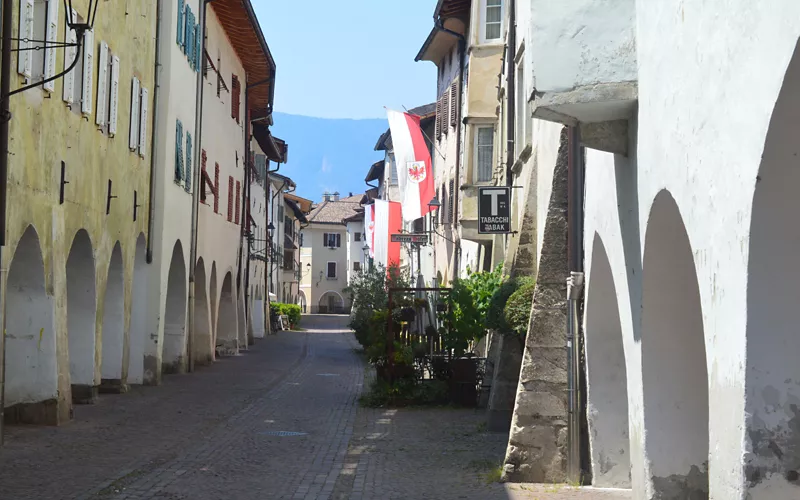
Egna is a small village with a timeless and eternal atmosphere, strategically located for nature lovers who want to get back in touch with the mountains after a relaxing city break.
From Egna, you can easily reach the Monte Corno Nature Park, from which you can reach several mountain pastures near Trodena. Additionally, several cycling and hiking routes can be taken from the village.
The historic centre of Egna is the quintessential South Tyrolean town, because it is rich in history and stories to be told in the shade of a portico while gazing at the mountain peaks.
In Glorenza, between walls and towers
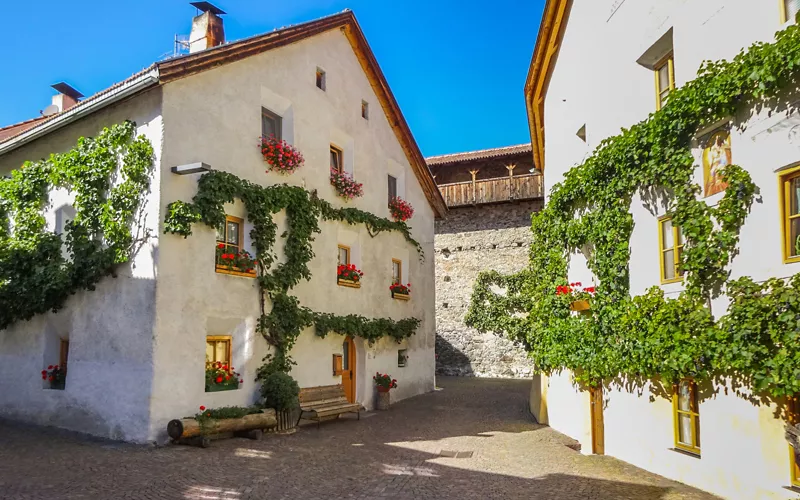
Glorenza also offers unique artistic architecture and a prime example of what must have been an authentic medieval citadel. In the past, it played an important role in the economic, commercial and defensive fabric of the area, as evidenced by the village walls and towers that are still intact.
In particular, that of Sluderno is the tower that best tells the story of Glorenza's past together with the town mill. But in addition to its history, the village also speaks of art: in the centre you can visit Paul Flora's exhibition, while beyond the walls there is an interesting sculpture worth photographing.
Vipiteno-Sterzing and its castles
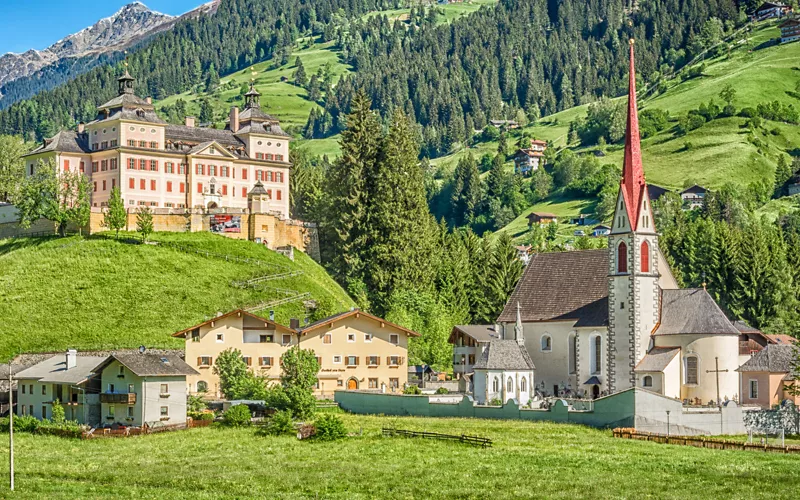
The journey of discovery through Italy's most beautiful South Tyrolean villages continues with Sterzing, a hub for culture and mountain lovers. Famous are its medieval reminiscences, not only in the city centre but also in the surrounding valleys where you can visit Castel Wolfsthurn, Castel Tasso and Castel Pietra.
In town, don't miss a visit to the Torre delle Dodici, which is also the emblem of the town, or the town hall building, which houses Roman artefacts. The Multscher Museum also has interesting and fascinating works of art inside, as does the Civic Museum opposite.
Last but not least are the natural attractions in the Val di Vizze and Campo di Trens: hiking, mountain tours and cycling are the order of the day.
Castelrotto with a view of the Schlern
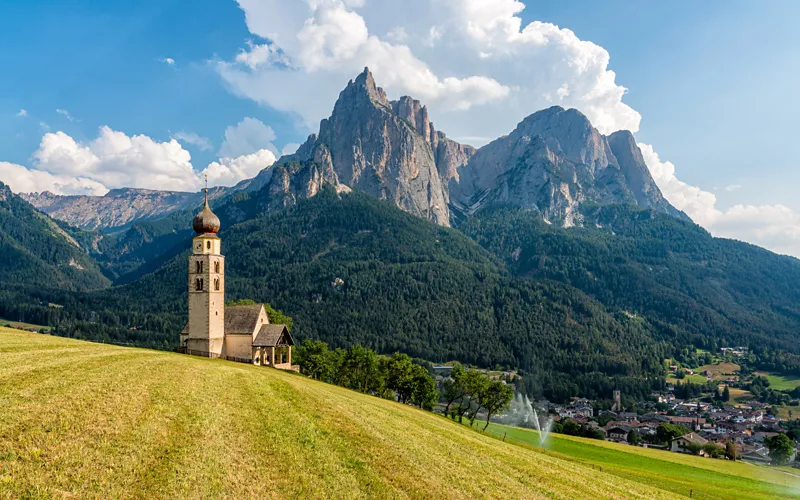
Castelrotto is no less beautiful and interesting. It is located on the Siusi Alps and holds more than one treasure to be discovered: the splendid bell tower of the Church of Saints Peter and Paul, for example, overlooking the Schlern Nature Park.
The centre is a riot of colours, fragrances and delicacies that still smell of old aristocratic houses and the luxury of the upper class. Like the other villages, it has several hiking trails and opportunities to experience the local nature.
Chiusa: the village that enchanted Albrecht Dürer
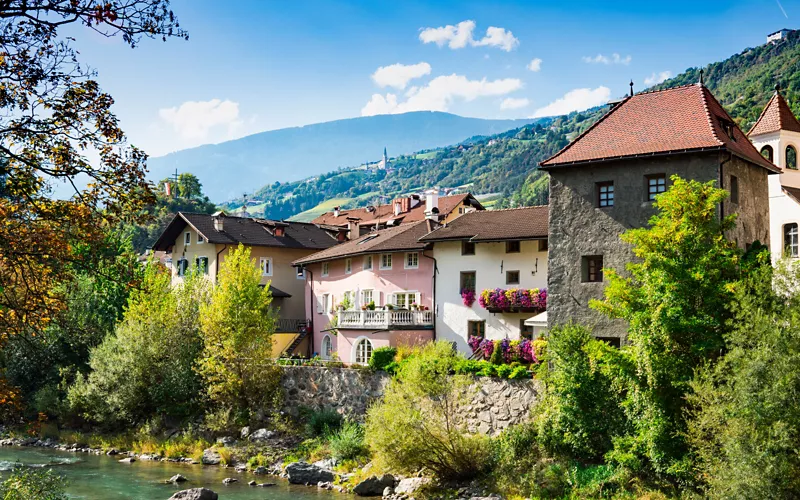
We conclude our overview of Italy's most beautiful South Tyrolean villages with Klausen. Also known as Dürer, it is famous for having hosted, and inspired, Albrecht Dürer. The so-called “stone” near the Tschan Mountain remains of him.
History enthusiasts in Klausen should not miss a look at the Municipal Museum and its main work, the Loreto Treasure from the 16th and 17th centuries, as well as the Loreto Chapel.

